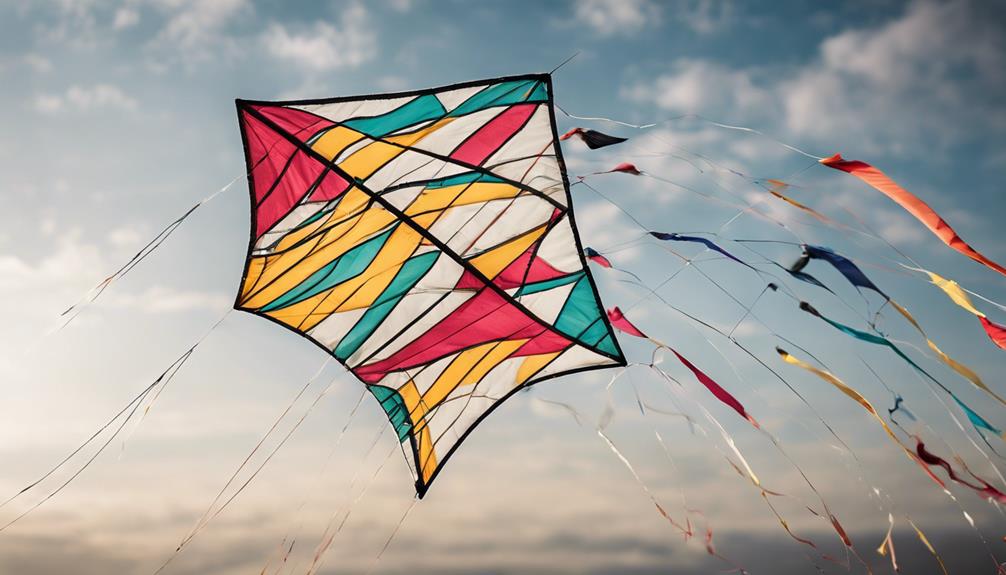In the world of kite flying, your lines are the invisible threads that weave your dreams into the sky, guiding your kite in a ballet of winds. You know the thrill of executing perfect aerial acrobatics hinges on the quality of these threads.
Opting for the right materials, like Dyneema or Spectra, isn’t just a choice—it’s a necessity for those who seek precision and durability. Brands such as Shanti and Laser Pro stand out, but there’s a lot more to consider.
Let’s navigate the essentials together, exploring how the right kite lines can elevate your flying experience to an art form.
Contents
The Anatomy of Kite Lines

To master aerial acrobatics, you must first understand that kite lines, typically crafted from materials like dacron, spectra, or dyneema, serve as the crucial link between you and your kite, offering varying degrees of strength, stretch, and durability. The choice of material directly impacts your flying experience, with each offering unique benefits.
Spectra, renowned for its low stretch, enables precise control essential for executing complex maneuvers, while Dyneema’s exceptional abrasion resistance and UV protection ensure longevity, even in harsh conditions. The length of the kite lines, ranging from 50 to 100 feet, further influences your kite’s responsiveness and flight characteristics.
Grasping these aspects ensures you select kite lines that enhance performance, tailored to your aerial acrobatics style and the environmental demands you face.
Material Matters: Choosing Wisely
When selecting kite lines for aerial acrobatics, understanding the distinct properties of materials like Dyneema, Spectra, and Kevlar is essential for ensuring both high performance and safety.
Dyneema lines, celebrated for their low stretch and high strength, offer you precise control crucial for intricate aerial maneuvers.
Spectra lines stand out for their exceptional durability and abrasion resistance, making them a reliable choice for prolonged stunts.
Kevlar, with its unparalleled tensile strength and heat resistance, proves indispensable for aggressive aerial acrobatics, safeguarding against line failure under extreme conditions.
Choosing the right material, thus, hinges on balancing these attributes—strength, durability, low stretch, and abrasion resistance—to match your specific acrobatic needs, ensuring your kite lines contribute to a high-performance, safe aerial dance.
Length and Strength Essentials
Mastering aerial acrobatics demands careful consideration of both the length and strength of your kite lines, ensuring they’re perfectly suited to your flying style and the complexities of your maneuvers. When learning to fly, whether it’s power kiting with Peter Lynn or mastering quad line stunt kites, the right combination can make a significant difference.
| Length (ft) | Strength (lb) | Suitable For |
|---|---|---|
| 20-50 | 50-150 | Single line kites, light wind conditions |
| 50-75 | 150-250 | Beginner stunt, moderate wind conditions |
| 75-100 | 250-500 | Advanced aerial acrobatics, strong wind conditions |
| 100+ | 500+ | Professional power kiting, extreme maneuvers |
Different sizes and strengths cater to various kite flying experiences, from casual flying to intricate stunt performances, ensuring you’ve got the technical edge for aerial acrobatics mastery.
Top 5 Recommended Brands
Selecting the right brand for your kite flying endeavors is crucial for achieving unparalleled aerial acrobatics. Prism Kites stands out with high-quality stunt kites, celebrated for their unmatched precision and performance, ensuring a superior flying experience.
HQ Kites cater to a broad audience, from beginners to advanced flyers, offering stunt kites that balance ease of use with impressive capabilities.
Revolution Kites distinguishes itself with quad line kites, providing exceptional control and maneuverability, a testament to its dedication to enhancing your kite flying skills.
Premier Kites delivers a diverse selection, encompassing beginner-friendly models and advanced stunt kites, facilitating a seamless progression in your aerial journey.
Lastly, Skydog Kites impresses with its innovative designs and durable construction, setting a high standard in the kite industry for reliability and creativity.
Care and Maintenance Tips
After exploring the top brands for your kite flying adventures, it’s crucial to focus on the care and maintenance of your kite lines to ensure optimal performance and longevity.
| Task | Why It Matters | How To Do It |
|---|---|---|
| Inspect | Prevents accidents by identifying wear and tear | Regularly check for frays or damage |
| Clean | Removes dirt, ensuring smooth flight | Use mild soap and water after use |
| Store | Avoids tangles, preserving line quality | Wind up neatly after flying |
| Avoid | Protects against material degradation | Keep away from harsh chemicals and prolonged sunlight |
| Replace | Ensures safe flying conditions | Promptly substitute damaged or frayed lines |
Adhering to these technical, precise steps in care and maintenance safeguards your kite lines, enhancing both their longevity and your aerial acrobatics mastery.
Conclusion
In conclusion, mastering aerial acrobatics with your kite hinges on selecting the right kite lines. Opt for materials like Dyneema or Spectra for their superior strength and minimal stretch, ensuring precise control. Adjustable lengths are crucial for fine-tuning your maneuvers. Brands like Shanti and Laser Pro stand out for their quality.
Remember, regular maintenance of your lines guarantees their longevity and performance. Choose wisely, maintain diligently, and you’ll elevate your kite flying to new heights of mastery.






